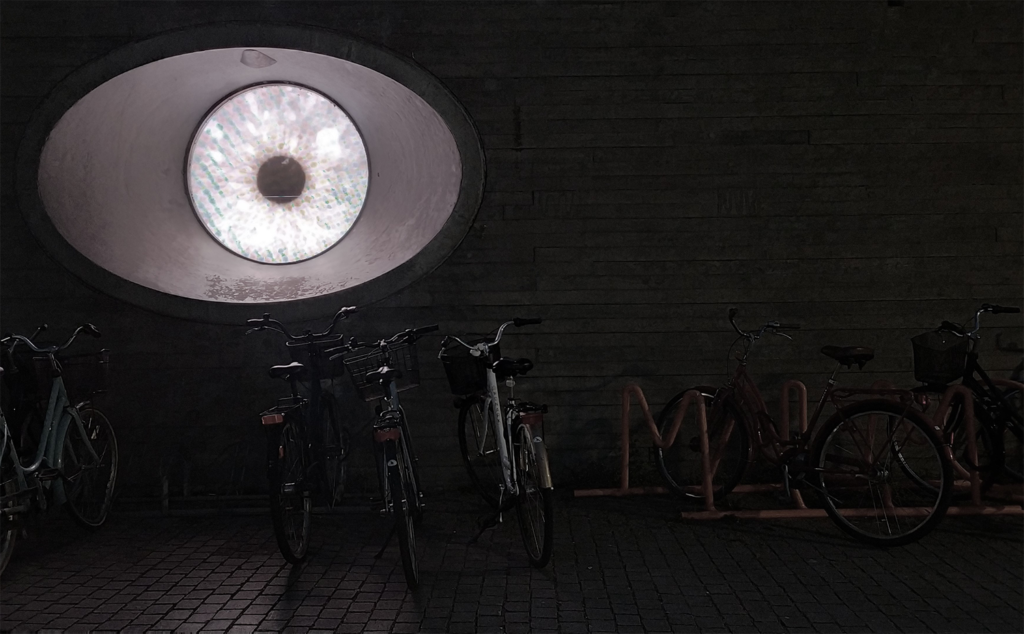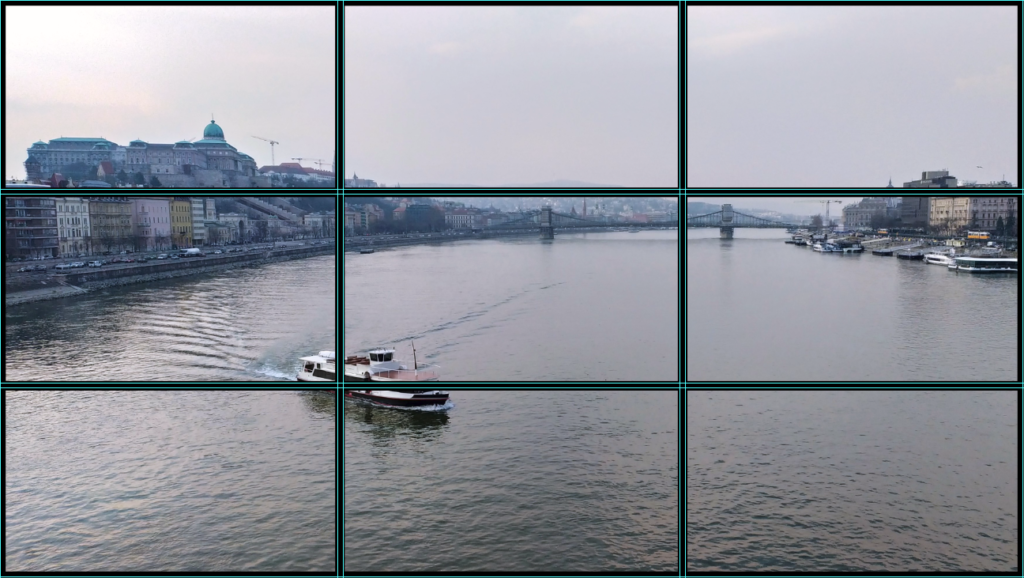A review of the documentary film « Amy » (2015) by Asif Kapadia
In Armenian cinema theaters documentary films are considered as not profitable. But how does Armenian society understand the term « documentary film »? It is associated with the usage of archive materials, interviews with protagonists and their relatives, arrangement of visual material in chronological logic, captions introducing the speakers, etc. Documentary filmmakers, who are usually going to make a film, are primarily thinking about these simple methods. In some cases, the authors contrive to find a solution of creative and correct storytelling form, which is evidence of their professionalism. On the other hand, sometimes documentaries can be built with grammatically correct editing, shots full of aestheticized approach, and scripts with creative bases, but still, they are passed by the film history as regular films and not making dialogue with the audience. The documentary film « Amy » (2015) by Asif Kapadia is not such kind of example. In this work, the director succeeded in making a biography film that creates a dialogue with the viewers, excites them and makes them feel empathy for the protagonist. And this is achieved using mainly the seemingly simple tools and methods mentioned in the beginning of this review. This phenomenon is described by the word « art », around which people are thinking and debating over the centuries in different parts of the world.
In this film, which is spreading light on the life story and character of Amy Winehouse, the author collected visual footage from her childhood, teenage and youth ages shot by her family, friends and journalists. Each of these is interesting as they show whatever we can’t usually see on the TV screens, but a direct combination of them would not become a work of art. Therefore, interviews with the people appearing in the archive materials come to tell about the protagonist’s inner world, excitements, joys and problems from the distance of time. A merger of audio-visual material occurs – the image and sound, independent from each other, would have an archival, document nature, but they become an invulnerable structure together.
The simple style of new areas’ addressing shots (by drones) is in line with the general style of the film, which strives for simplicity. By their inner logic and form, these shots serve as the final solution of the dramaturgical line – the protagonist’s death, which is mystically interpreted as leaving the Earth, rising to the heavens, and seeing the environment from above.
The logic of the above-mentioned dramaturgical line is similar to the track record of a cardiogram device working in a balanced pace, which is from time to time coming out of the norm, creating a shock for the viewer.
As a witness, the audience becomes a participant in the intimate and cherished moments of her life; and at the end of the film, even knowing the reality very well, we get emotional again. Probably all the spectators know that ominous news before the screening, but for an average statistical viewer, the feelings of regret here are different than listening to the news program on TV: taking part in Amy’s life situations, feeling that she is not manipulating or hiding from the screen for us, a close-friendly connection feeling arises in the audience. It can be highly connected with the author’s courage when he brings the audience to the cinema hall and, from the very beginning, shows technically bad quality shots from family archives. Before our eyes, the teenage girl is growing, evolving, and becoming a popular and beloved artist, so even Tony Bennett kindly endures her whims. It provokes a feeling that she is going to abrasion side. During the film, the subconscious anxiety costrel and the feeling of inability to change anything are increasing at equal rates reaching the top marks on the emotional scale. The audience is aware of that abrasion, but the protagonist is not aware of it. But at the end of the film, the desires of both sides are identified – both of them do not want such an ending. In this tragic story, the British self-ironic humor can be noticed, which means that the film authors are free of pompous behavior and complexes, like the characters who appear in the movie. « There’s no point in saying anything but the truth »,- Amy Winehouse said.
The Yerevan screenings of « Amy » with full cinema halls allow drawing a number of conclusions about the Armenian audience demand as well as the trends in world cinema. Of course, the large interest in the film is directly connected with the scandalous and popular personality of the protagonist. However, to keep the audience in the hall for 125 minutes in a way not to get boring is only possible in case of understanding, solidarity and love between the director and the main hero (in this case, with the footage presenting her). The evidence of the benevolent attitude of the singer is the success of the movie and its emotional power. Although from another world, where she now lives for the lovers of her songs, Amy agreed to enter into a new game, which her friends had begun in their teenage years by recording each other. Art is the beautiful image of an object and in this film, it’s obvious the love of the author to the singer, also the regret and grief towards her tragic fate.
Claims that in the modern changing world, where everything happens very quickly, the documentary film should be as short as possible not to lose the audience halfway are disproved with this film. This also proves that three Yerevan screenings in a hall of 350 seats were free of charge and the audience wouldn’t mind paying money if they decided to leave the hall. This case also rejected the impossibility of bringing the audience (especially Armenian) to the cinema with documentary film. What the Armenian film viewer wants from documentarians is honesty. They expect a film that is not detached from reality and not overloaded with aesthetics. In such kinds of films, according to the authors’ approach, even the dirty wall, messy room, or scene satisfying the biological requirements is perceived as an artistic element.
Analyzing the documentary film « Amy » with Armenian screenings in the background, we can see a bilateral process. On the one hand, the film gathers the audience thanks to the original story, unique topic and famous protagonist, and keeps them in the screening hall for more than two hours thanks to the exciting, competent and sincere work that is done. On the other hand, it brings to the cinema the specific audience, which made drawn up an opinion on a documentary film by the TV movies made just as report and interview. It also shows the real nature of documentary cinema and excites people. This process makes more people to be curious about documentary cinema. If national or international films increase such examples, documentary cinema can form its audience and arouse theatrical demand in Armenia.
Seg Kirakossian
The review won the main award during the Review competition of the British Film Festival (Yerevan, 2016)




















![[:en]MovieDoc1[:] MovieDoc1](https://segkirakossian.com/wp-content/uploads/2019/12/18527493_618833684974083_2376181257795983698_o_618833684974083-215x143.jpg)
![[:en]MovieDoc2[:] MovieDoc2](https://segkirakossian.com/wp-content/uploads/2019/12/18595369_618832768307508_558489671115809788_o_618832768307508-215x129.jpg)
![[:en]MovieDoc3[:] MovieDoc3](https://segkirakossian.com/wp-content/uploads/2019/12/18491602_618833301640788_695727652194389483_o_618833301640788-215x143.jpg)
![[:en]MovieDoc4[:] MovieDoc4](https://segkirakossian.com/wp-content/uploads/2019/12/18588699_619020804955371_2301869855713705192_o_619020804955371-215x143.jpg)
![[:en]MovieDoc5[:] MovieDoc5](https://segkirakossian.com/wp-content/uploads/2019/12/18588834_618833224974129_1706146866949415958_o_618833224974129-215x143.jpg)
![[:en]MovieDoc6[:] MovieDoc6](https://segkirakossian.com/wp-content/uploads/2019/12/18558737_618834128307372_3683517189667768653_o_618834128307372-215x143.jpg)
![[:en]MovieDoc7[:] MovieDoc7](https://segkirakossian.com/wp-content/uploads/2019/12/18588838_619017528289032_7191441577708402624_o_619017528289032-215x137.jpg)
![[:en]MovieDoc9[:] MovieDoc9](https://segkirakossian.com/wp-content/uploads/2019/12/18588688_619020698288715_8407152945466332683_o_619020698288715-215x143.jpg)
![[:en]MovieDoc12[:] MovieDoc12](https://segkirakossian.com/wp-content/uploads/2019/12/18558623_618836551640463_7848377345402986998_o_618836551640463-215x143.jpg)
![[:en]MovieDoc14[:] MovieDoc14](https://segkirakossian.com/wp-content/uploads/2019/12/18556705_618834851640633_5596987315929108888_o_618834851640633-215x143.jpg)
![[:en]MovieDoc15[:] MovieDoc15](https://segkirakossian.com/wp-content/uploads/2019/12/18556672_618834364974015_7311083580206565336_o_618834364974015-215x143.jpg)
![[:en]MovieDoc30[:] MovieDoc30](https://segkirakossian.com/wp-content/uploads/2019/12/18491575_618833424974109_386185094148959278_o_618833424974109-215x143.jpg)
![[:en]MovieDoc16[:] MovieDoc16](https://segkirakossian.com/wp-content/uploads/2019/12/18519830_619020638288721_7023623427020123906_n_619020638288721-215x161.jpg)
![[:en]MovieDoc17[:] MovieDoc17](https://segkirakossian.com/wp-content/uploads/2019/12/18555988_619020684955383_1628000779926229756_n_619020684955383-215x382.jpg)
![[:en]MovieDoc18[:] MovieDoc18](https://segkirakossian.com/wp-content/uploads/2019/12/18489944_618833548307430_2531697035663252151_o_618833548307430-215x143.jpg)
![[:en]MovieDoc19[:] MovieDoc19](https://segkirakossian.com/wp-content/uploads/2019/12/18527509_618833841640734_1314629687088753023_o_618833841640734-215x143.jpg)
![[:en]MovieDoc29[:] MovieDoc29](https://segkirakossian.com/wp-content/uploads/2019/12/18489730_618832701640848_8686064952221125457_o_618832701640848-215x161.jpg)
![[:en]MovieDoc20[:] MovieDoc20](https://segkirakossian.com/wp-content/uploads/2019/12/18491385_618832818307503_7847884914582411032_o_618832818307503-215x143.jpg)
![[:en]MovieDoc22[:] MovieDoc22](https://segkirakossian.com/wp-content/uploads/2019/12/18518074_619017668289018_5788298721896055948_o_619017668289018-215x143.jpg)
![[:en]MovieDoc24[:] MovieDoc24](https://segkirakossian.com/wp-content/uploads/2019/12/18491783_619017834955668_1372677514674136805_o_619017834955668-215x143.jpg)
![[:en]MovieDoc11[:] MovieDoc11](https://segkirakossian.com/wp-content/uploads/2019/12/18588943_619017761622342_2379023257691486966_o_619017761622342-215x143.jpg)
![[:en]MovieDoc26[:] MovieDoc26](https://segkirakossian.com/wp-content/uploads/2019/12/18491410_618833001640818_5432481954272350453_o_618833001640818-215x143.jpg)
![[:en]MovieDoc27[:] MovieDoc27](https://segkirakossian.com/wp-content/uploads/2019/12/18491740_618838354973616_5604136909133685548_o_618838354973616-215x143.jpg)
![[:en]MovieDoc28[:] MovieDoc28](https://segkirakossian.com/wp-content/uploads/2019/12/18489926_618833094974142_4142730597141491572_o_618833094974142-215x143.jpg)
![[:en]MovieDoc31[:] MovieDoc31](https://segkirakossian.com/wp-content/uploads/2019/12/18518383_619017671622351_6332868032936829440_o_619017671622351-215x143.jpg)
![[:en]MovieDoc10[:] MovieDoc10](https://segkirakossian.com/wp-content/uploads/2019/12/18558854_619018478288937_5314119929062408700_o_619018478288937-215x143.jpg)
![[:en]MovieDoc25[:] MovieDoc25](https://segkirakossian.com/wp-content/uploads/2019/12/18556450_619018544955597_7128623905279947057_o_619018544955597-215x143.jpg)
![[:en]MovieDoc21[:] MovieDoc21](https://segkirakossian.com/wp-content/uploads/2019/12/18527167_618833628307422_1775920804676191579_o_618833628307422-215x143.jpg)









